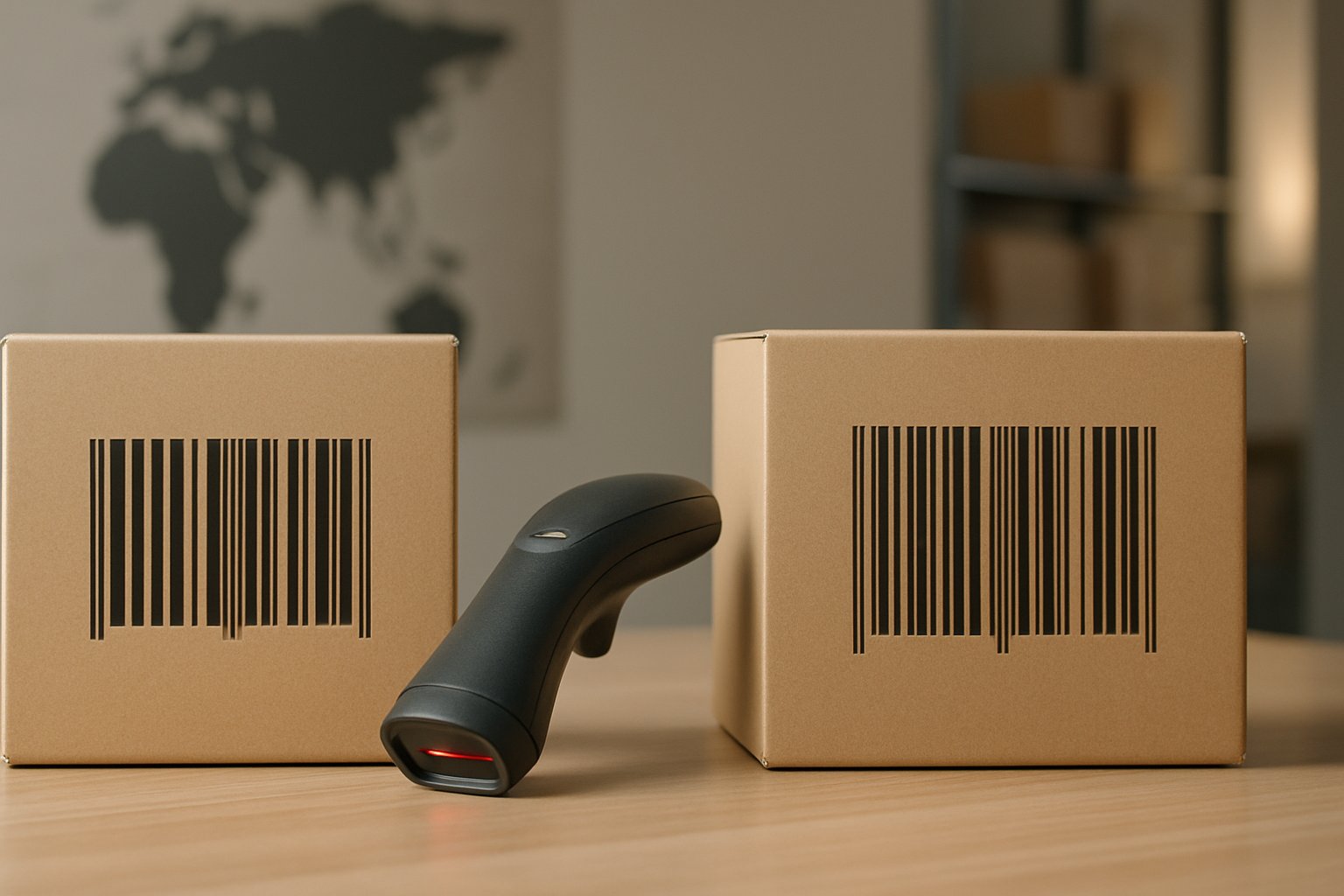UPCs vs. EANs: What Small Brands Need to Know

When you’re preparing products for retail or online marketplaces, one of the first questions you’ll run into is whether your products need a UPC. Barcodes may seem like small details, but they’re a crucial part of getting your products listed, tracked, and sold worldwide.
What is a UPC?
A UPC (Universal Product Code) is a 12-digit code widely used in the United States and Canada. It’s paired with a barcode that can be scanned at checkout counters, in warehouses, and across supply chain systems.
For small brands, UPCs are often required when selling through major retailers or online platforms like Amazon, Walmart, or Target. They ensure that your product is recognized as unique and prevent confusion in inventory systems.
Best Practices for UPCs
- Use GS1-certified codes: GS1 is the global standards organization that issues UPCs. Purchasing directly from GS1 ensures your codes are legitimate and tied to your brand.
- Buy new, not used: Some third-party sellers offer “cheap” UPC codes that were previously assigned to other products. These may still scan, but they can create conflicts if the old product data is still in circulation.
- Avoid duplicates: Each unique product (including size, color, or variation) should have its own UPC.
What is an EAN?
An EAN (European Article Number) is similar to a UPC but contains 13 digits instead of 12. EANs are primarily used outside of North America, especially in Europe and other global markets.
Many retailers and platforms outside the U.S. require EANs. Fortunately, most systems today can read both UPCs and EANs, but it’s important to know which one your target markets expect.
UPC vs. EAN: A Quick Comparison
| Feature | UPC (Universal Product Code) | EAN (European Article Number) |
|---|---|---|
| Length | 12 digits | 13 digits |
| Primary Use | United States, Canada | Europe & global markets |
| Retail Acceptance | Widely accepted in North America | Widely accepted internationally |
| Issued By | GS1 (North America) | GS1 (Global) |
| Compatibility | Scannable in most systems worldwide | Scannable in most systems worldwide |
| Best For | Brands focusing on U.S. & Canadian retail | Brands with global distribution goals |
The Risk of Using Used or Fake Codes
Some small brands are tempted by low-cost UPC resellers that promise instant barcodes. While these codes may scan, they come with risks:
- Data Conflicts: If the code was once used for a different product, its data may still exist in retailer systems. Your product could be misclassified, mispriced, or even rejected.
- Retailer Rejection: Platforms like Amazon increasingly require proof that your UPCs are registered to your brand in GS1. Used codes typically fail this test.
- Brand Confusion: If your product shares a code with another company’s item, you lose control over how it’s represented in databases.
Why This Matters: Future-Proofing Your Brand
Investing in legitimate, GS1-certified UPCs and EANs isn’t just about compliance—it’s about building a foundation for growth.
- Market Expansion: As you move from local to national and international sales, clean, verified codes make global distribution smoother.
- Inventory Management: Retailers and 3PLs rely on barcodes for efficiency. Accurate codes mean fewer errors and faster fulfillment.
- Brand Trust: Customers, marketplaces, and retail partners take your business more seriously when your product identifiers are professional and legitimate.
By starting with the right codes from the beginning, you avoid costly problems later and ensure your brand is ready to scale—no matter where your products end up.








































